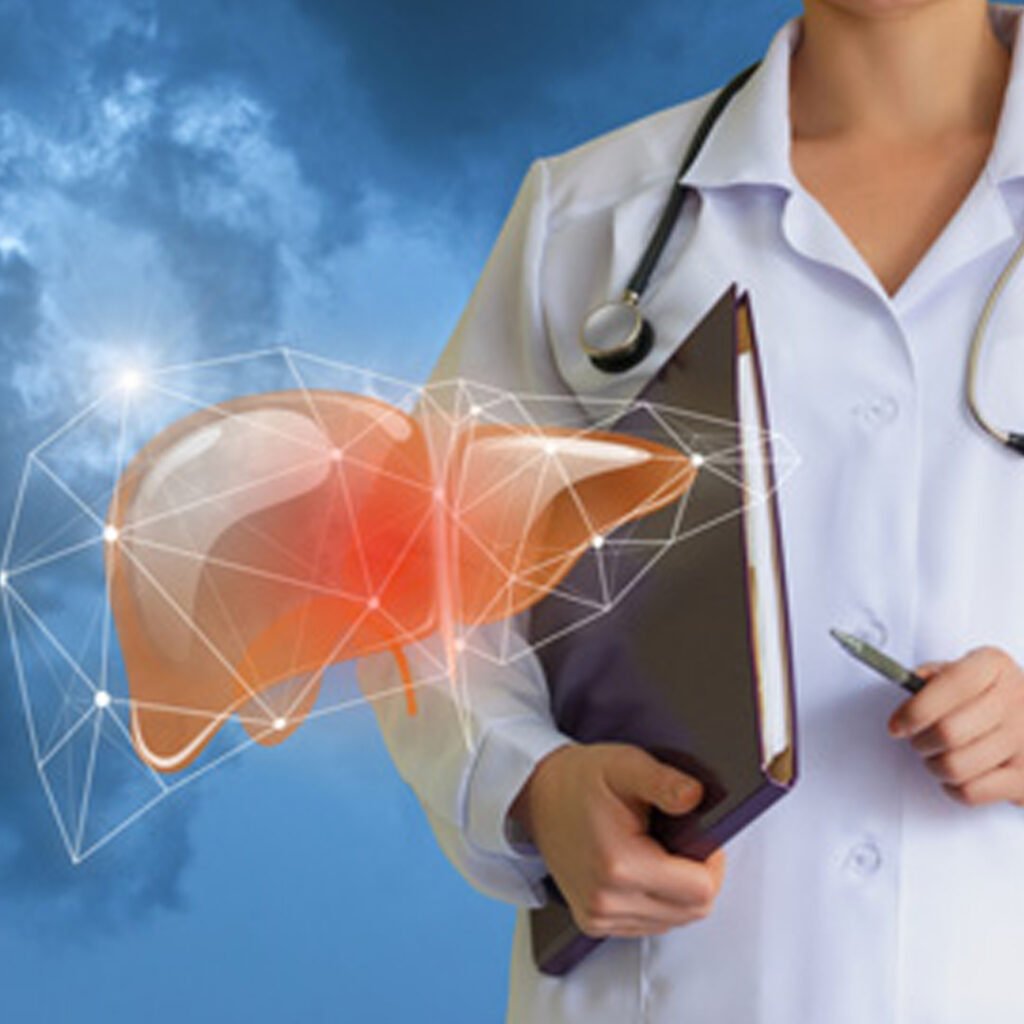Autoimmune liver and biliary disease
Introduction
Autoimmune liver and biliary diseases occur when the body’s immune system mistakenly attacks liver cells or bile ducts. This causes inflammation, impaired liver function, and progressive liver damage. Symptoms can include fatigue, jaundice, and abdominal discomfort. Early detection and treatment are crucial to prevent complications such as cirrhosis, liver failure, or the need for transplantation.

Types of Autoimmune liver and biliary disease
Autoimmune Hepatitis (AIH)
Immune system attacks liver cells causing inflammation, fatigue, jaundice, and risk of cirrhosis.
Primary Biliary Cholangitis (PBC)
Small bile ducts are destroyed, causing bile accumulation, inflammation, and liver scarring.
Primary Sclerosing Cholangitis (PSC)
Inflammation and scarring of bile ducts block bile flow, increasing liver failure risk.
Overlap Syndromes
Features of more than one autoimmune liver disease coexist, complicating diagnosis and treatment.
Causes of Autoimmune liver and biliary disease
- Genetic predisposition increases susceptibility to autoimmune liver and biliary diseases in some individuals.
- Abnormal immune responses cause the body to mistakenly attack its own liver cells and bile ducts.
- Environmental triggers like viral infections may initiate immune system dysfunction leading to liver damage.
- Hormonal factors, especially in women, can influence immune system activity and disease development.
- Chronic infections can alter immune tolerance, promoting autoimmune reactions against liver tissue.
- Certain medications may trigger immune-mediated liver injury in genetically susceptible individuals.
- Gut microbiota imbalance can influence immune regulation and contribute to autoimmune liver diseases.
- Family history of autoimmune diseases increases the likelihood of developing liver-related autoimmune conditions.
- Oxidative stress from toxins or infections can damage liver cells and trigger immune responses.
- Stress and lifestyle factors may exacerbate immune dysregulation, promoting disease onset.
- Coexisting autoimmune disorders, such as thyroid or type 1 diabetes, increase risk of liver involvement.
- Persistent inflammation in the liver or bile ducts can progressively worsen tissue damage and scarring.
Clinical features of Autoimmune liver and biliary disease
Fatigue
Persistent tiredness occurs due to chronic liver inflammation and impaired metabolic function.
Jaundice
Yellowing of skin and eyes results from bilirubin buildup caused by liver dysfunction.
Abdominal Pain
Discomfort or pain develops in the upper right abdomen from liver inflammation.
Itching
Bile salt accumulation under the skin causes severe itching in affected patients.
Dark Urine
Excess bilirubin excreted through urine causes dark-colored urine, commonly observed in these diseases.
Symptoms associated with Autoimmune liver and biliary disease
- Loss of appetite occurs due to liver inflammation and dysfunction.
- Unexplained weight loss happens because liver cannot process nutrients properly.
- Nausea and vomiting result from impaired liver function and bile accumulation.
- Abdominal swelling develops due to fluid buildup in advanced liver disease.
- Easy bruising occurs from decreased clotting factor production by liver.
- Swelling in legs happens because liver damage causes fluid retention.
- Confusion arises when toxins accumulate in blood from liver impairment.
- Dark urine and pale stools result from bilirubin and bile imbalance.
Investigations in Autoimmune liver and biliary disease
- Measures liver enzymes, bilirubin, and proteins to assess liver function. Abnormal results suggest inflammation or damage, helping in diagnosing autoimmune liver disorders.
Evaluates red and white blood cells, hemoglobin, and platelets. Autoimmune liver disease may cause anemia, low platelets, or increased white blood cells due to inflammation or immune response.
detects the presence of autoantibodies that attack the liver. Positive ANA results are commonly associated with autoimmune hepatitis and other autoimmune liver diseases.
Identifies autoantibodies targeting smooth muscle cells in the liver. Helps confirm autoimmune hepatitis diagnosis and differentiate it from other liver conditions.
Detects antibodies directed against mitochondria, a hallmark of primary biliary cholangitis. High AMA levels strongly indicate PBC in symptomatic patients.
Non-invasive imaging to evaluate liver size, texture, and bile duct abnormalities. Detects fibrosis, bile duct strictures, or obstruction caused by autoimmune processes.
Advanced imaging to visualize bile ducts. Useful in diagnosing primary sclerosing cholangitis and detecting strictures, blockages, or inflammation.
Obtaining liver tissue for microscopic examination helps confirm diagnosis, assess inflammation, fibrosis, and the extent of autoimmune liver disease.
Measures elevated immunoglobulins, which are often seen in autoimmune liver diseases, indicating immune system overactivity.
Assesses blood clotting function. Liver damage reduces clotting factor synthesis, prolonging PT and increasing risk of bleeding complications.
